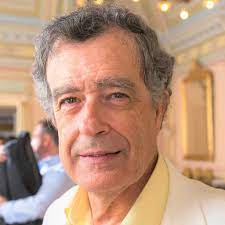Prof. Manuel Nieto-Vesperinas, Instituto de Ciencia de Materiales de Madrid
New scenery of electrodynamics forces, including a view into nanophotonics
When: 12:00-13:00 CET, March 2nd (Thursday), 2023
Where: Seminar Room, ICMM-CSIC, Campus de Cantoblanco, Madrid
I shall demonstrate that the theory of electrodynamical forces that makes use of Maxwell’s stress tensor, only describes half the physics of these phenomena. The other half, that I shall uncover, and whose law we have formulated, is governed by the imaginary part of a complex stress tensor of which Maxwell’s is only its real part.
This complex stress tensor law constitutes a new paradigm of the mechanical efficiency of light on matter, and completes the landscape of electromagnetic forces in photonics and electrodynamics. It widens our understanding in the design of both illumination and matter, in optical manipulation and propulsión by light in e.g solar sails.
In tis context, one may look at the energy conservation law of Electromagnetism: The Poynting theorem: Energy transport is determined by two quantities of the momentum of light: one is real, well-known and currently observed; the other is imaginary, also known,
and alternating. However, the latter hinders the former; it is a workhorse of engineering in the design of transmission lines and antennas, and it is known as reactive power, which impairs the system performance by dissipation of feeding power.
I shall show that the complex momentum conservation law, which in a dielectric is relevant to the Abrahme-Minkowski debate, conveys a quantity which we coined as the “reactive strength of canonical momentum”, whose built-up hinders the efficiency of all currently
observed (time-averaged) electrodynamical forces, and I shall illustrate it with its consequences in the optical force on nanoparticles and nanoantennas: beads employed in optical tweezers in Biology, high index-resonators which are the basis of a wide range of
metasurfaces in Mie-resonant photonics or Mie-tronics, and plasmonic nanoparticles.
References:
M. Nieto-Vesperinas and X. Xu, Light: Sci. & Appl. 11:297 (2022).
J.Zeng and J. Wang, Light: Sci. & Appl. News&Views 12:20 (2023)
M. Nieto-Vesperinas and X. Xu, Phys. Rev. Res. 3, 043080 (2021).
